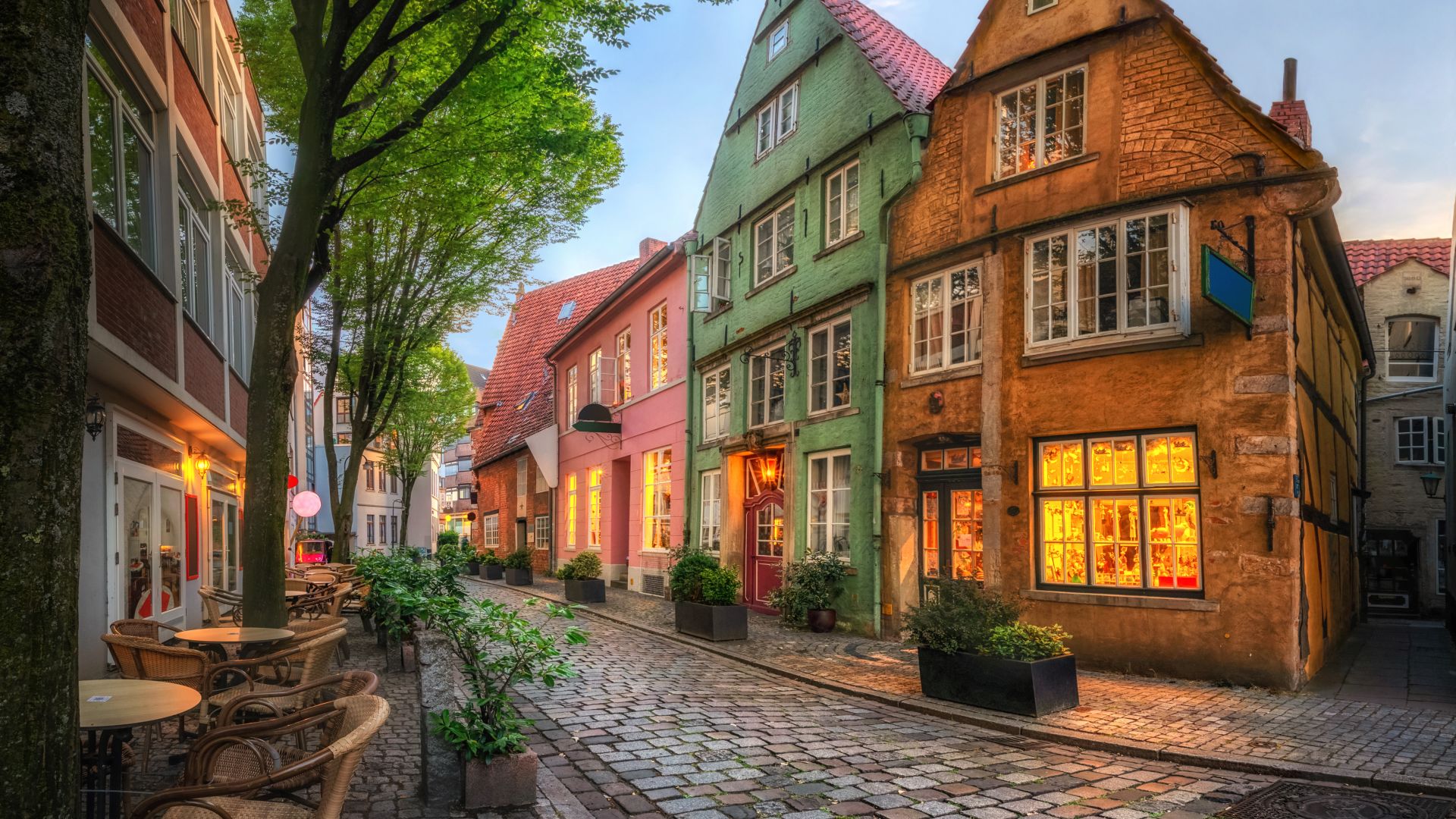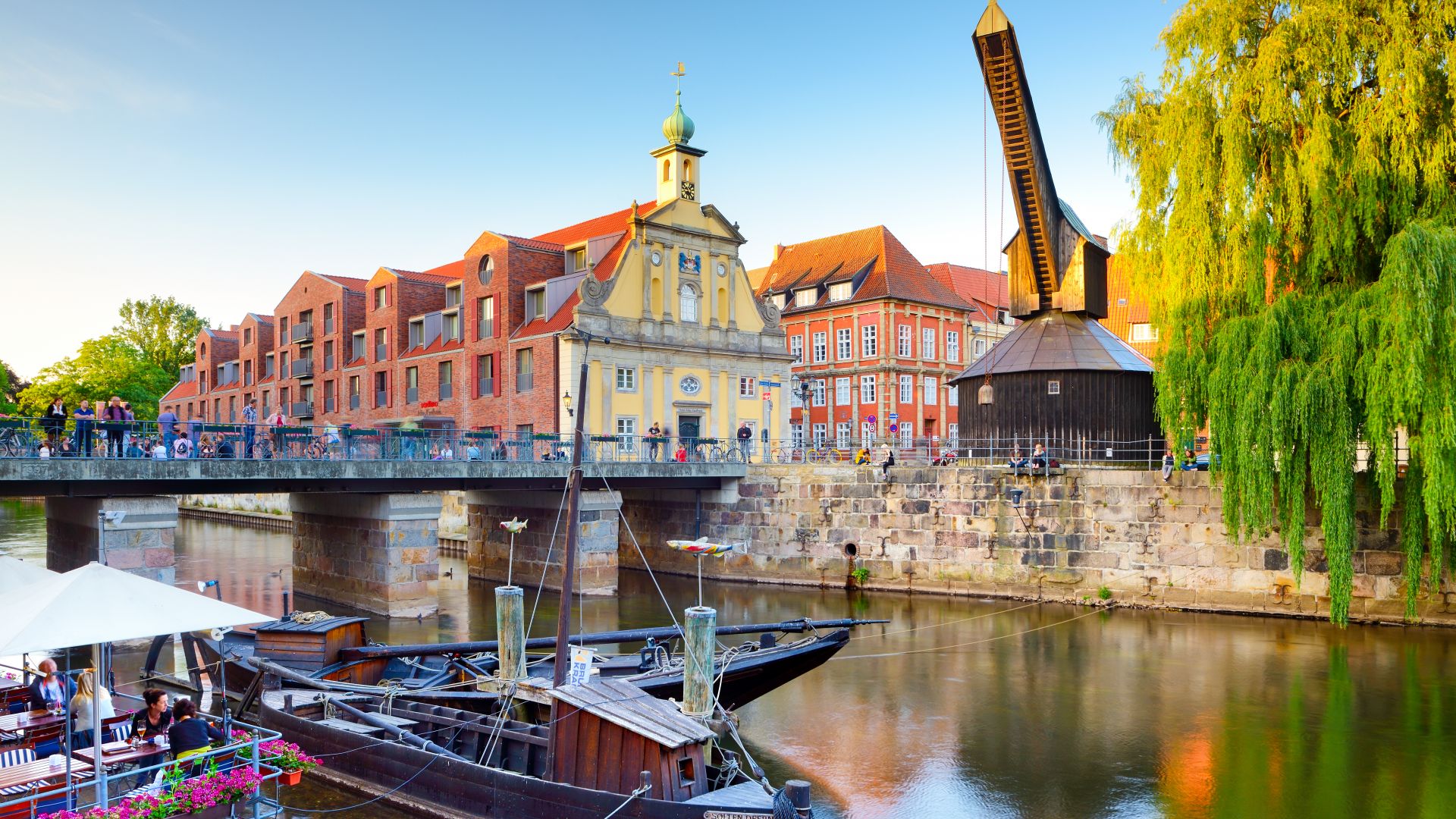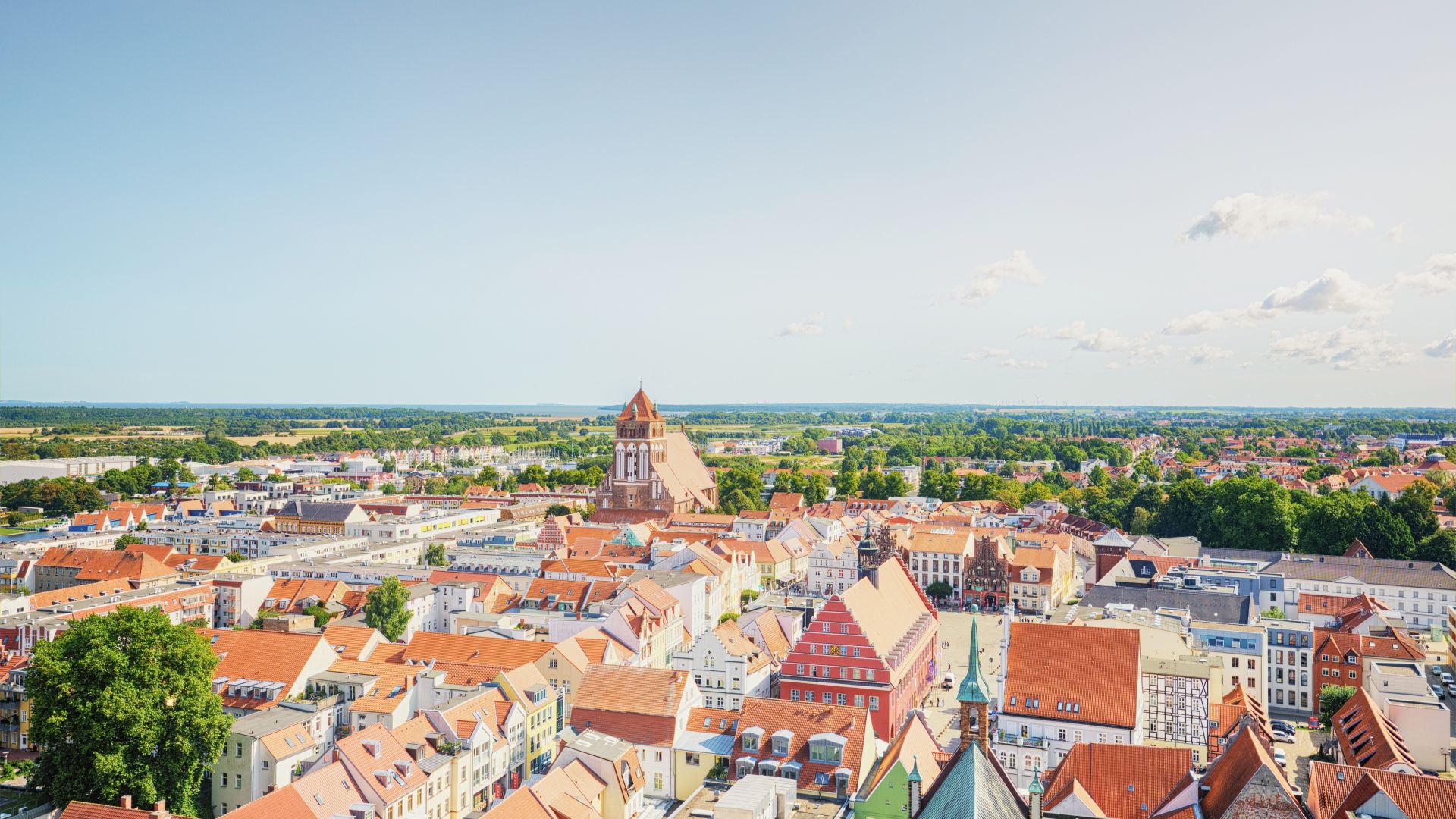Cities & Culture
Tracing the Path of the German Hanseatic League
Many stories, tales and legends exist about the Hanseatic League, a powerful medieval association of merchants and cities. Even today, some Hanseatic cities in northern Germany present themselves as stunningly beautiful.
Bremen: World heritage and cool brick houses
 Bremen: historic Schnoor district, picturesque old town
©getty images (bbsferrari)
Bremen: historic Schnoor district, picturesque old town
©getty images (bbsferrari)
Small but powerful. While the city-state may be the smallest of the 16 federal states, its range of experiences is as vast as the enduring Hanseatic prosperity, evident in the form of magnificent bourgeois houses on the marketplace. There you will also find the Roland, the largest statue of the German Middle Ages which, together with the Gothic Town Hall, are a UNESCO World Heritage Site. Right next door, alongside the bronze statue of the Bremen Town Musicians, you'll find Germany's only Ratskeller, serving exclusively domestic wines. But another distinctive thing about this venue: there's no beer. In Bremen, the city of beer! And in this coffee capital, decaffeinated coffee was 'invented' – by Ludwig Roselius, who also constructed the Böttcherstrasse, lined with brick houses, as a work of art. The New York Post even proclaimed the restored streets of the Old Town quarter of Schnoor to be “the coolest” in the world, probably at least partly due to the many bars there. Speaking of which - you’re sure to find beer and excellent coffee being served there.
Lüneburg: a city built on salt
 Lueneburg: along the river Ilmenau in the harbour
©DZT (Francesco Carovillano)
Lueneburg: along the river Ilmenau in the harbour
©DZT (Francesco Carovillano)
Salt was the 'white gold' of the Hanseatic League – and due to the massive salt deposits beneath its surface, it granted unprecedented wealth to Lüneburg, located east of the famous heather blossom heath (spectacular in August!) It even came to hold the salt monopoly in northern Germany. The museum housed on the salt works site, the German Salt Museum, tells the story - and much more! For instance, the valuable commodity was shipped from there to the nearby, once smaller Hanseatic cities of Hamburg and Lübeck. The former prosperity is still visible in the cityscape today: over 1,300 brick houses, imposing churches, and the stately town hall bear witness to the vibrant Hanseatic era. The historic waterfront with the Old Harbour and its famous crane also makes for an exciting photo spot. Hungry and thirsty? Then head to the Stintmarkt with the city's most famous bar and restaurant quarter!
Greifswald: a makeover for Frederick’s city
 Greifswald: Hanseatic city in fine weather
©Adobe Stock (cinzano77)
Greifswald: Hanseatic city in fine weather
©Adobe Stock (cinzano77)
Since reunification, the trajectory of this city between Rügen and Usedom has been very positive. The rejuvenation, reflected in expensive renovations, has been well received by young people there, leading to a university boom. Once again, students enhance the atmosphere at Greifswald’s romantic harbour and market square, which with its colourful patrician houses and red glowing town hall is an architectural masterpiece. Another interesting note: no less than three Gothic brick churches compete for visitors. However, the ruins of the Eldena Abbey behind the venerable Wieck wooden bascule bridge are particularly impressive. This Cistercian abbey is a silent witness to the Thirty Years’ War. The atmosphere is palpable and has been immortalised many times by the brushwork of Caspar David Friedrich. The city’s great son is omnipresent anyway, especially in the centre named after him, where his works are on display.
Rostock: historical ambience and maritime flair
 Rostock: Cyclists on the old river at Warnemünde
©TMV (Felix Gänsicke)
Rostock: Cyclists on the old river at Warnemünde
©TMV (Felix Gänsicke)
Those who want to visit Scandinavia by ferry usually leave from Germany’s largest Baltic Sea port. Right in Rostock. But there are many reasons to stay. First and foremost, the atmosphere around the cruise terminal in the nearby Warnemünde as well as in the more idyllic city harbor. This is even more impressive when up to 250 tall ships and traditional sailing vessels turn the Hanse Sail into the highlight of the annual calendar. Architectural highlights can be found throughout the year in the Old Town, where medieval buildings evoke the past splendour, such as the charming Hausbaumhaus Tree House, the over 700-year-old Town Hall, and the Gothic St. Mary's Church, including its astronomical clock. For those more inclined towards the present, head out to the Kröpeliner-Tor-Vorstadt - known as the KTV for short. In Rostock’s youngest and trendiest district, small (alternative) shops, pubs, restaurants and clubs attract visitors. The perfect setting to miss your boat...